Rolex Air-King 116900 – One Of The Most Confusing Rolex Watches
BaselWorld 2016 Rolex Watches
During our meeting with Rolex in Basel last March, we got to see a number of new Rolex watches. Sure, we get to see new Rolex watches every year, but this year the Geneva Giant had some pretty cool watches for us to see. The new Rolex Explorer in 39mm is something high on my wishlist, as is the new Rolex Daytona 116500, but that one requires serious saving-up and a long breath regarding its waiting list (yes, also for us watch journalists).
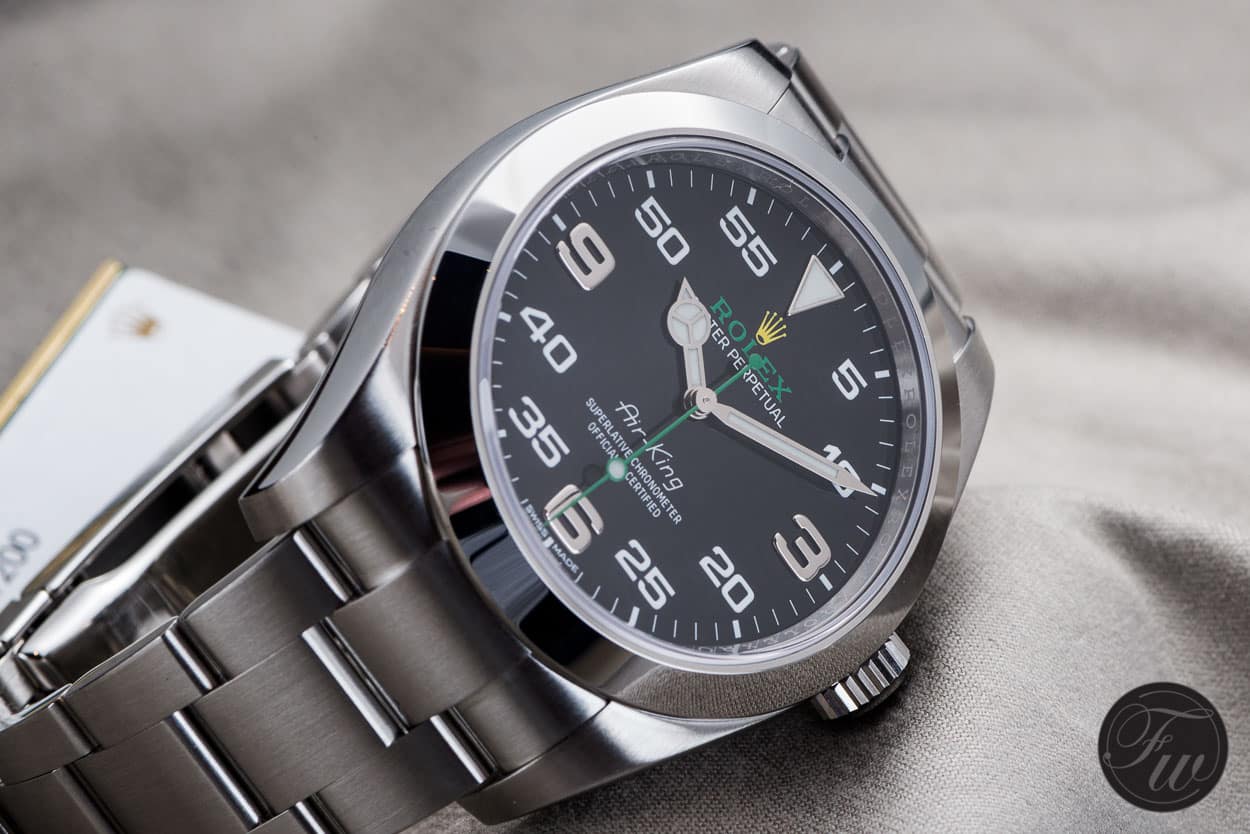
Rolex Air-King
A watch that quietly left the stage a couple of years ago, was the Rolex Air-King. This watch, often considered to be as an entry-level Rolex watch, had its own following and a long history in the Rolex collection. The Air-King model name was the last one of many ‘Air’-models (Air Lion, Air Tiger and Air Giant in the 1930’s and 1940’s) and introduced in 1945. The Rolex Air-King reference that is perhaps best known is the 5500, which was in production for a long time.
34mm Explorer
A number of Rolex Air-King models also had the typical Rolex Explorer dial, with Arabic numerals at 3, 6 and 9 o’clock. The size of the Rolex Air-King however, was always 34mm. A small version of the Rolex Explorer, you could say. Since 2007, the Air-King also became chronometer certified (COSC). Especially the 34mm Air-King with a black dial, was often mistaken for an Explorer from a distance. It wasn’t of course. Upon closer inspection you would see some differences. The Explorer, like other Rolex watches as the Submariner, GMT-Master etc, had its model name located at 6 o’clock on the dial. The Air-King had its model name located below the Rolex logo at 12 o’clock.
Rolex Air-King 116900
The new Rolex Air-King 116900 is perhaps one of the most confusing modern Rolex watches. The model name moved to 6 o’clock, like most other Rolex watches have. Rolex increased the case size from 34mm to a perfectly wearable 40mm case.
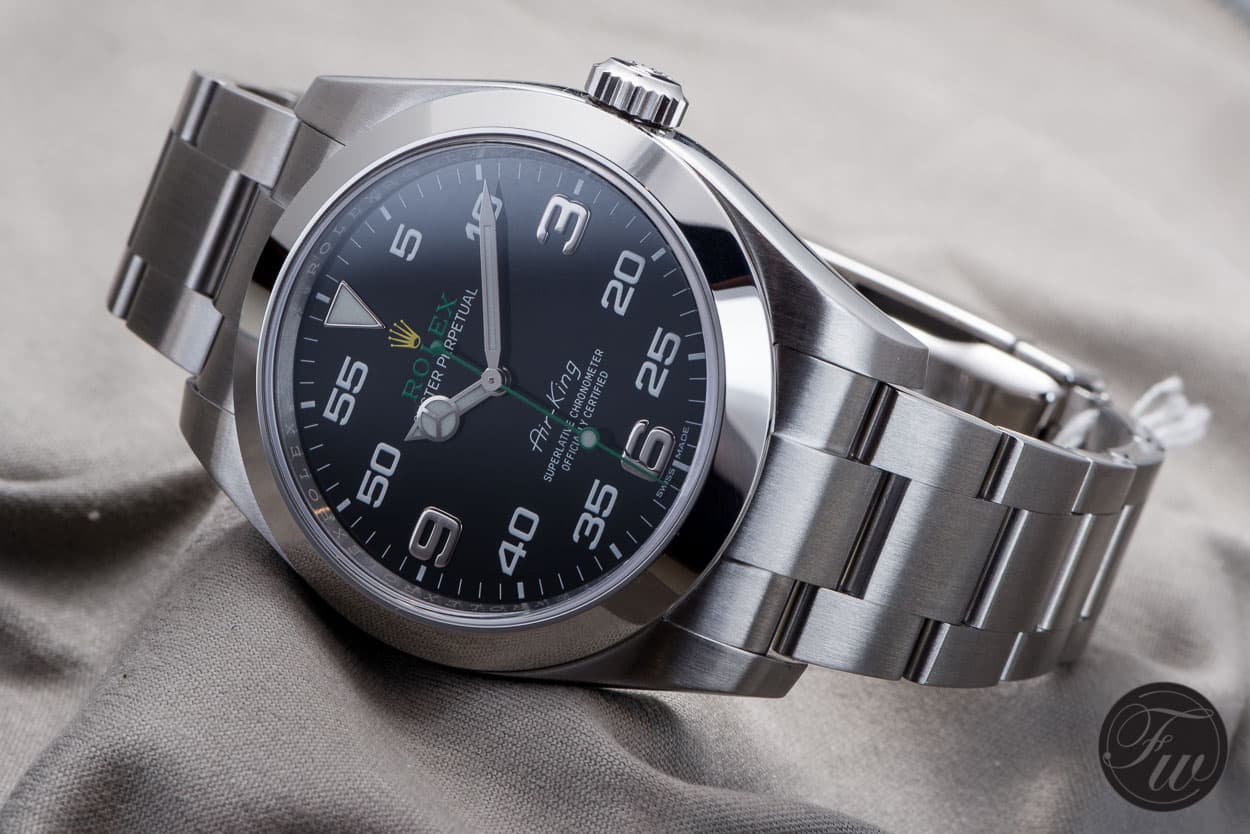
Milgauss Case
One of the other things that was quickly noticed is the shape of the case. It will immediately remind you of the 40mm Milgauss case. And that is correct. It is the same case as the Milgauss, which means the new Rolex Air-King 116900 is also protected against magnetic fields. The case (and bracelet) are made of the famous 904L grade stainless steel and has a beautiful satin finish. Where the Oyster bracelet on the Milgauss has a PCL (polished center link), the bracelet on the Rolex Air-King is all satin. Due to the case construction and twin-lock crown, the Rolex Air-King 116900 is water resistant to 100 meters.
Rolex Air-King Dial
The dial of the new Rolex Air-King 116900 is what confused a lot of people, including me. Not only did Rolex move the Air-King logo to the lower part of the dial (the original Air-King in 1945 also had it at 6 o’clock), but they added a lot of Arabic numerals to the dial. Not only the typical ‘Explorer’ lay-out with Arabic 3, 6 and 9’clock markers are on there, the remaining hour markers go from ‘5’ to ’55’. A 60-minute scale, with interruption of the ‘Explorer’ markers. This remarkable dial lay-out is based on a pair of cockpit instruments that Rolex made in 2006 for a special project (Bloodhound SSC project). An engineering project to get a super sonic car to reach a speed of 1000mp/h on land. More can be found here. One of the board instruments had a similar lay-out.
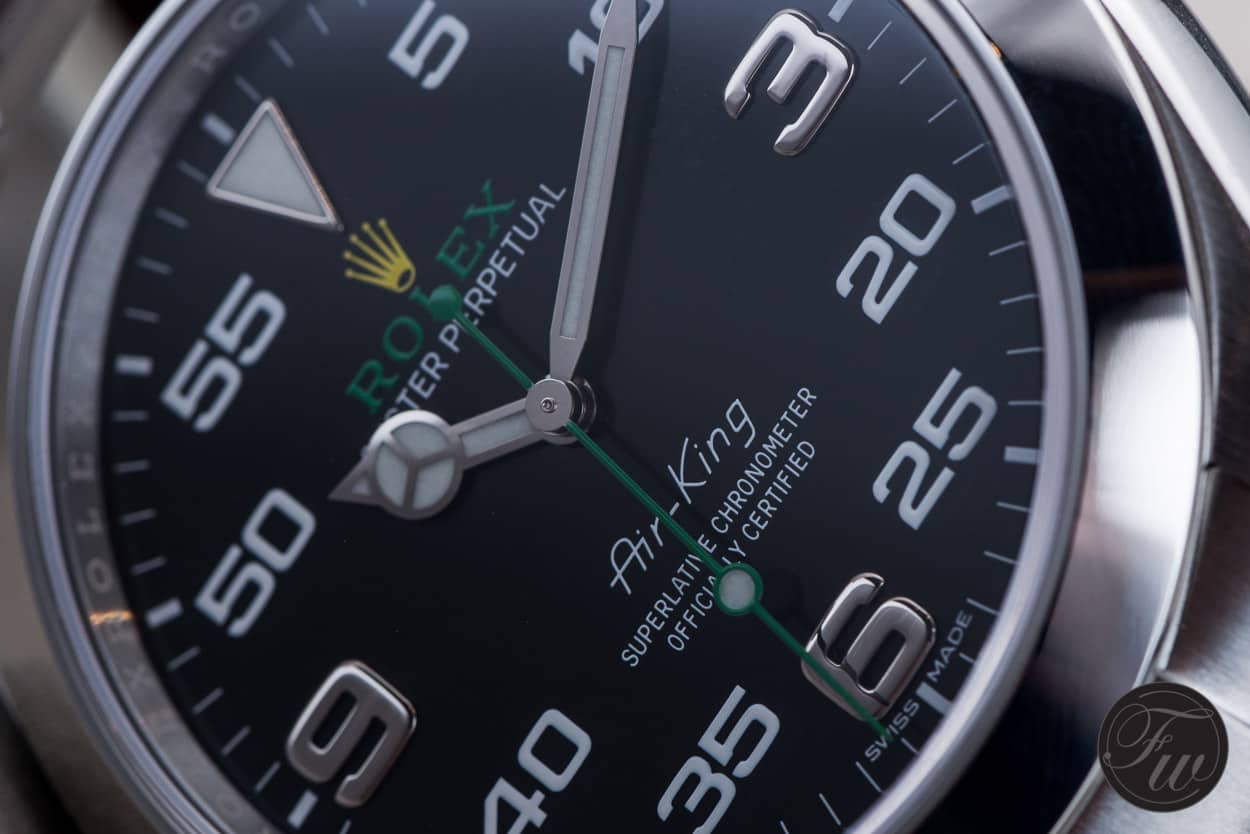
The hands and applied numerals are made of 18 carat white gold. The luminous material is patented by Rolex and is called ‘Chromalight’. The Rolex writing is in the typical green color as well as the seconds hand. The Rolex logo at 12 o’clock is in yellow/gold.
Movement
The Rolex Air-King watches from 2007 on already had a chronometer certified movement. The new Rolex Air-King 116900 is no different of course, it is fitted with Rolex caliber 3131. This movement is also used in the Rolex Milgauss and also complies to the new standard of Rolex, performing within -2/+2 seconds of deviation per day. Well within the chronometer requirement of -4/+6 seconds a day. Rolex gives a 5-year warranty on this performance and will adjust the watch free of charge when it doesn’t perform between -2/+2 seconds a day. The caliber 3131 movement has a Paramagnetic blue Parachrom hairspring, ensuring that magnetic fields have little influence on its performance.
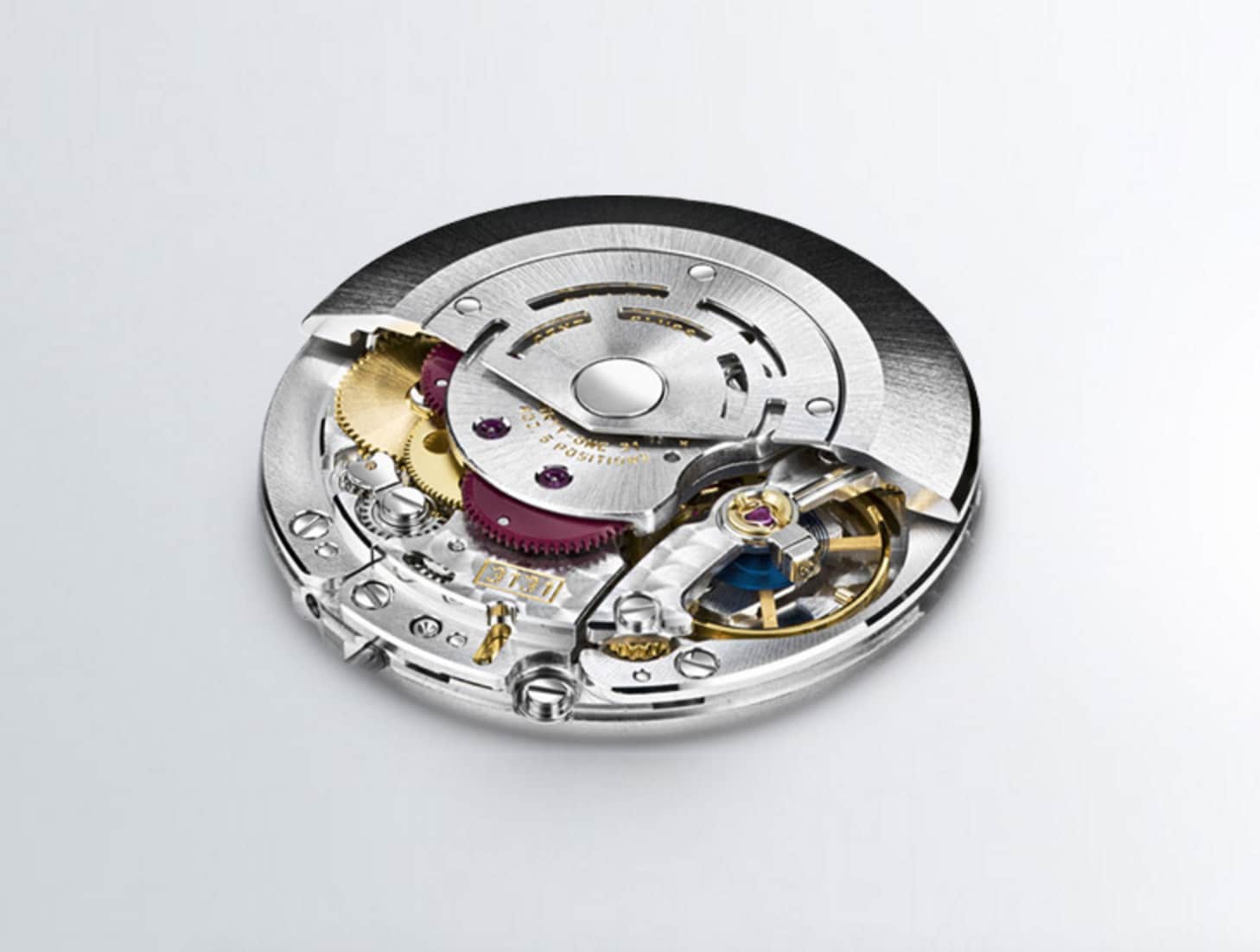
Rolex caliber 3131, image by Rolex.com
Some Thoughts on the Rolex Air-King Reference 116900
To be honest, I wasn’t very enthusiastic at first. To me it seemed like Rolex took the case of the Milgauss, re-stamped a batch of former 39mm Explorer dials (as these also had the white gold Arabic numerals without Chromalight/lume) et voila, a new Rolex watch is born. But this doesn’t seem to be the case upon closer inspection. The dial is clearly based on the cockpit board instrument.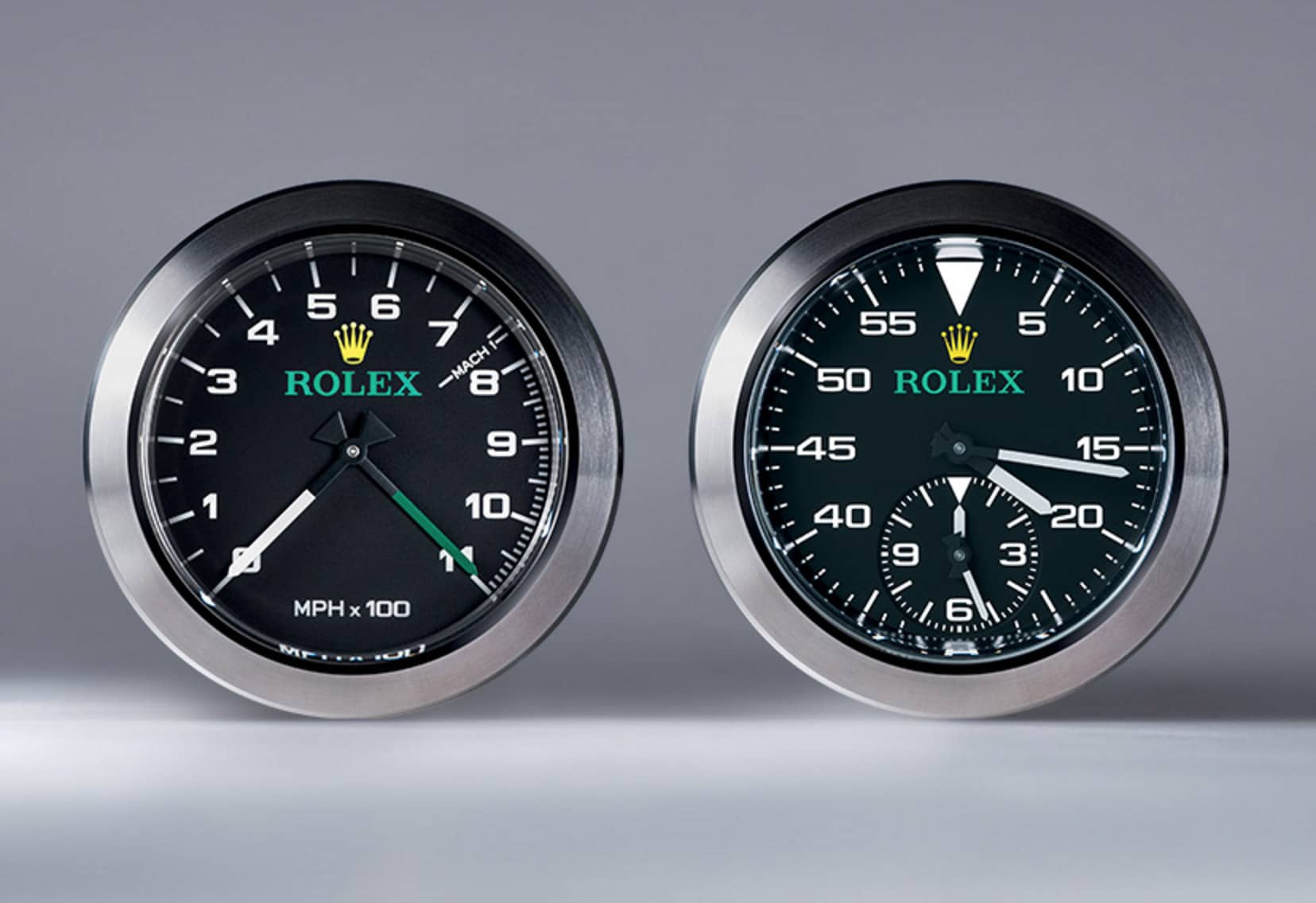
That, and the fact that Rolex moved the writing of the Air-King model name to a position that was originally used (in 1945), makes it already easier to understand. The use of different scales (60 minute scale and the Explorer lay-out) on one dial can be confusing at first, but this is a matter of understanding that you indeed have two scales on one dial. But perhaps more important, the watch is simply fun to look at. There is a happening a lot on the dial of the Rolex Air-King. Rolex used different colors for the dial, which makes it an interesting composition.
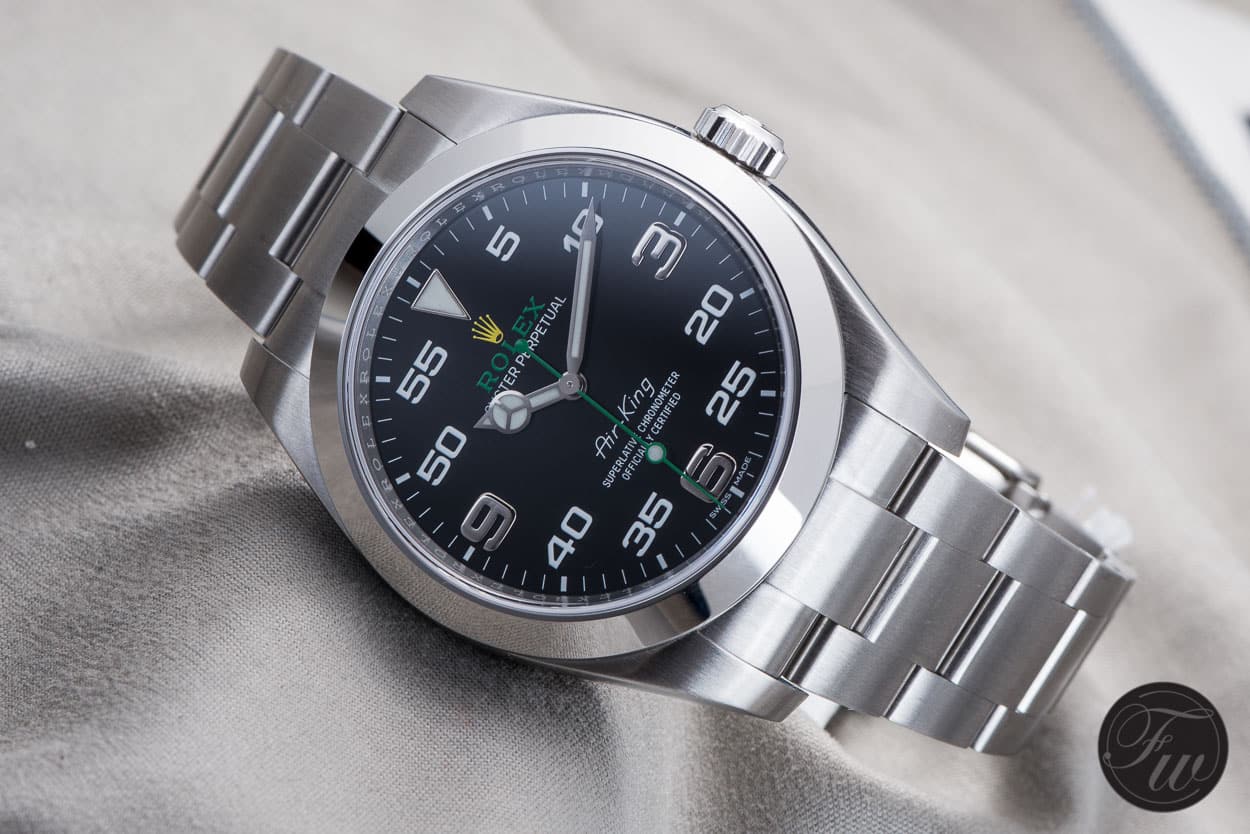
Attractive
Besides an interesting dial, great history and attractive case diameter, this 40mm Rolex Air-King 116900 has a list price of €5650,-. That is a bit cheaper than its 39mm cousin, the Rolex Explorer 214270 (we talked about it here) with a list price of €5900,-. For that money, you will get a Rolex watch that meets all current Rolex standards (accuracy, warranty, etc.) and is – in my opinion – more wearable than its 34mm Air-King predecessors.
More information via rolex.com
